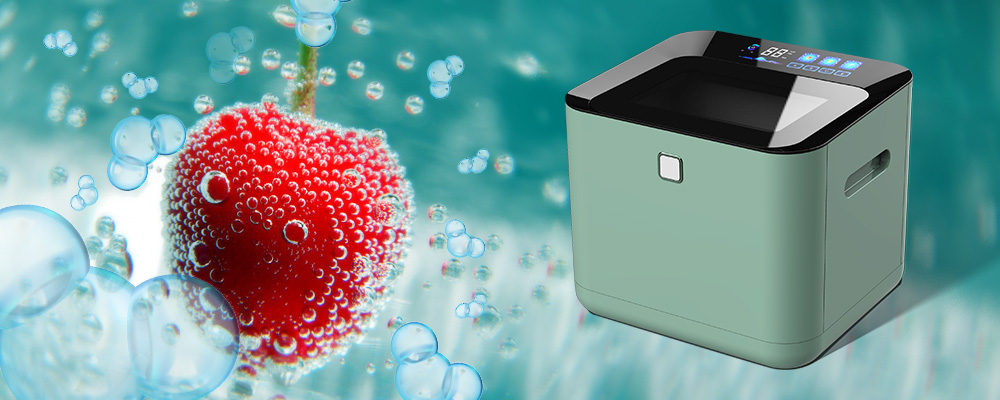In recent years, the term "hydroxyl radicals" has frequently appeared in searches by those concerned with food safety or home-cleaning technologies. But what exactly are hydroxyl radicals? What specific roles do they play? And why are they increasingly incorporated into products such as fruit-and-vegetable washing purifiers and germicidal air purifiers? These are questions many people have. In this article, we will briefly explain hydroxyl radical technology, aiming to assist you in selecting the ideal cleaning devices.
What are Hydroxyl Radicals?
Hydroxyl radicals (·OH) are electrically neutral free radicals with unpaired electrons. They consist of an unstable covalent structure formed by one hydrogen atom and one oxygen atom. In natural environments, hydroxyl radicals are generated in large quantities in the atmosphere through photolysis and electrolysis reactions. However, due to their strong oxidative capacity and high reactivity, they exist independently for only very short periods.
Applications of Hydroxyl Radicals
Despite their low measurable concentration in the atmosphere, hydroxyl radicals are hailed as the "detergent" of the troposphere. Their potent oxidation and high reactivity enable them to interact with most atmospheric pollutants, often to initiate the first step of their removal. For instance, volatile organic compounds (VOCs)—common airborne pollutants and odorous substances—can cause discomfort or even illness at high concentrations. When VOCs encounter hydroxyl radicals, they are rapidly degraded via three pathways: (1) hydrogen atom abstraction, (2) electron transfer, and (3) addition reactions, ultimately breaking down into CO₂, water, and inorganic salts.
Hydroxyl radicals efficiently decompose organic molecules, including most pesticides. These radicals break chemical bonds in pesticide molecules, rendering them harmless and easy to dissolve in water for rinsing. Additionally, hydroxyl radicals exhibit strong inactivation capabilities against bacteria, viruses, and fungal spores. They penetrate and oxidise cell membrane lipids, disrupt protein disulfide bonds, and break DNA strands. Thereby destroying microbial structures and functions for effective sterilisation.
Beyond their reactive and antimicrobial strengths, hydroxyl radical technology offers another key advantage: its primary byproducts are typically water, carbon dioxide, and trace mineral salts, which rarely cause secondary pollution. This makes the technology highly favoured by developers of cleaning and purification devices, including air sterilisation systems.

Practical Uses of Hydroxyl Radical Technology
Due to its efficacy in deep cleaning and broad-spectrum disinfection, hydroxyl radical technology is widely applied across industries, including healthcare and wastewater treatment. Advancements have led to multiple methods for generating hydroxyl radicals, including the Fenton method, Fenton-like oxidation, ozone oxidation, electrochemical processes, and photocatalytic oxidation.
Electrochemical and photocatalytic methods are increasingly integrated into household cleaning appliances due to their energy efficiency, low cost, ease of use, and lack of secondary pollutants. For example, third-generation fruit and vegetable washers now employ water electrolysis to produce hydroxyl radicals directly during cleaning, simultaneously degrading pesticide residues and sterilising produce. This approach is safer and more efficient than first-generation ozone-based systems. Similarly, hydroxyl radical-based air purifiers—now a common innovation—use photocatalytic oxidation with UV lamps and photocatalysts to generate radicals from airborne moisture, effectively eliminating VOCs and disinfecting spaces. These systems excel in formaldehyde removal and microbial inactivation.
Beyond these applications, cleaning appliance manufacturers and developers are exploring integrating hydroxyl radical deep-cleaning functions into washing machines, dishwashers, and other appliances. Likely, this green, deep-cleaning technology will soon become a staple feature in an expanding range of everyday household appliances.


